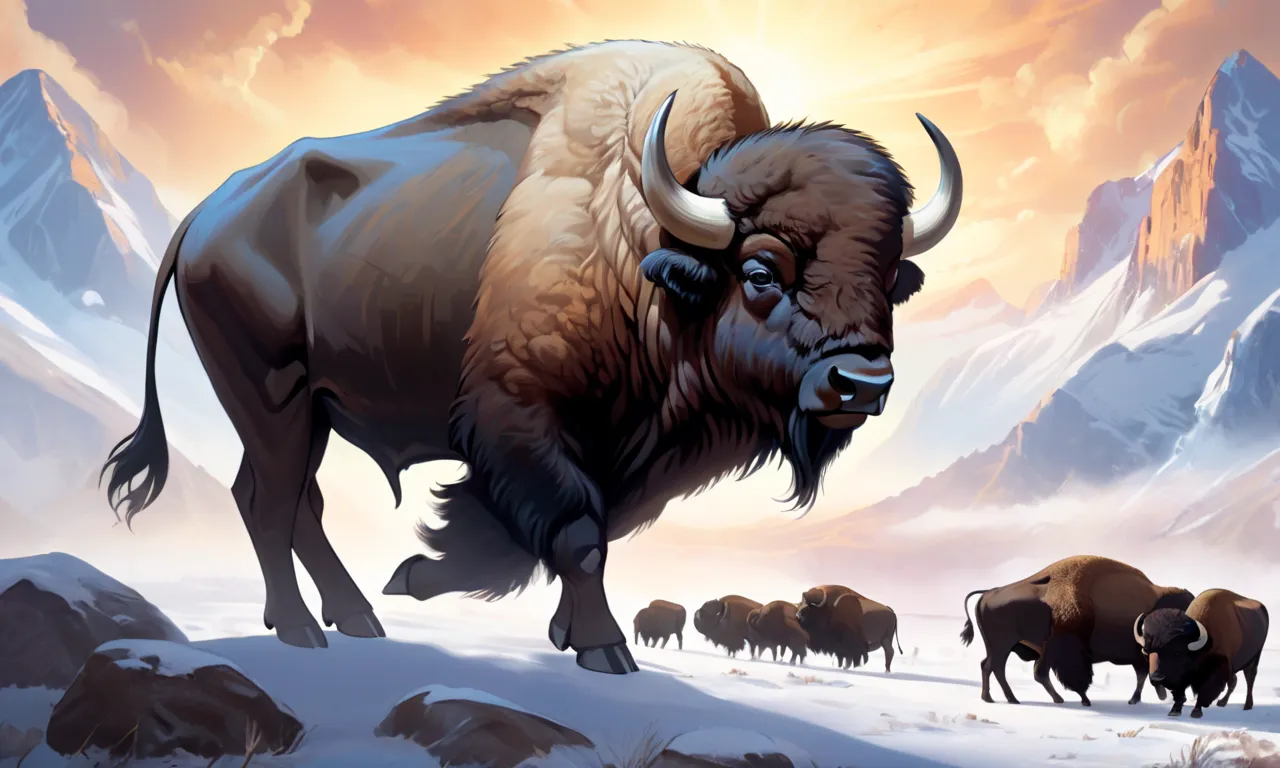
The Buffalo is a significant animal in many cultures around the world. The spiritual meaning of the buffalo varies greatly depending on the culture and tribe, but there are certain common themes that tie these meanings together. In this article, we will explore the symbolism of the buffalo and how it represents different aspects of life, from strength to adaptability.
Strength and Power
One of the most common themes associated with the buffalo is strength and power. This association comes primarily from the fact that buffaloes are large animals known for their physical prowess. In Native American cultures, the buffalo was often seen as a symbol of strength and endurance due to its ability to carry heavy loads over long distances.
For instance, in Lakota mythology, the buffalo is associated with the West direction. The buffalo represents strength because it carries the weight of many people across the land without tiring or complaining. Similarly, in other tribes such as the Blackfoot and Cheyenne, the buffalo also symbolizes courage and power.
Abundance and Prosperity
Another important aspect of the spiritual meaning of the buffalo is abundance and prosperity. Historically, buffaloes played a vital role in providing food, clothing, and shelter for many indigenous peoples in North America. They were crucial to their survival, ensuring that they had enough resources to thrive.
As a result, these cultures associated the buffalo with abundance and prosperity. For example, among the Lakota people, the buffalo represents wealth because it provides everything they need to live comfortably. In this context, the buffalo is considered a symbol of good luck and fortune.
Adaptability and Survival Skills
The buffalo also symbolizes adaptability and survival skills due to its ability to thrive in different environments. Native Americans saw the buffalo as a model for resilience and resourcefulness because it could survive harsh winters, droughts, and other challenging conditions.
Furthermore, the buffalo is known for its adaptability to various terrains – from open plains to dense forests. This flexibility has made it an important symbol of survival and perseverance across many different cultures.
Balance and Harmony
In some spiritual traditions, the buffalo represents balance and harmony. Its large size, combined with its gentle demeanor, makes it a powerful emblem of stability and equilibrium. For instance, in Native American culture, the buffalo is often depicted as standing between two mountains, symbolizing the need for balance in life.
Moreover, the buffalo’s unique horn shape resembles the number eight – a symbol associated with infinity and eternity in many cultures. This connection to infinity suggests that the buffalo can help us find harmony within ourselves and the world around us.
Connection to Earth and Nature
Lastly, the buffalo represents our connection to the earth and nature. As herbivores, they play an essential role in maintaining ecological balance by regulating plant growth. Their grazing habits help keep grasslands healthy and prevent overgrazing by other animals.
In this sense, the buffalo serves as a reminder of our interdependence with nature and the importance of living harmoniously with the environment. It encourages us to respect and protect the natural world for future generations.
In conclusion, the spiritual meaning of the buffalo varies greatly depending on the culture and tribe but shares common themes such as strength, adaptability, balance, abundance, and connection to nature. Understanding these symbolic associations can deepen our appreciation for this magnificent animal and its role in shaping human cultures throughout history.










